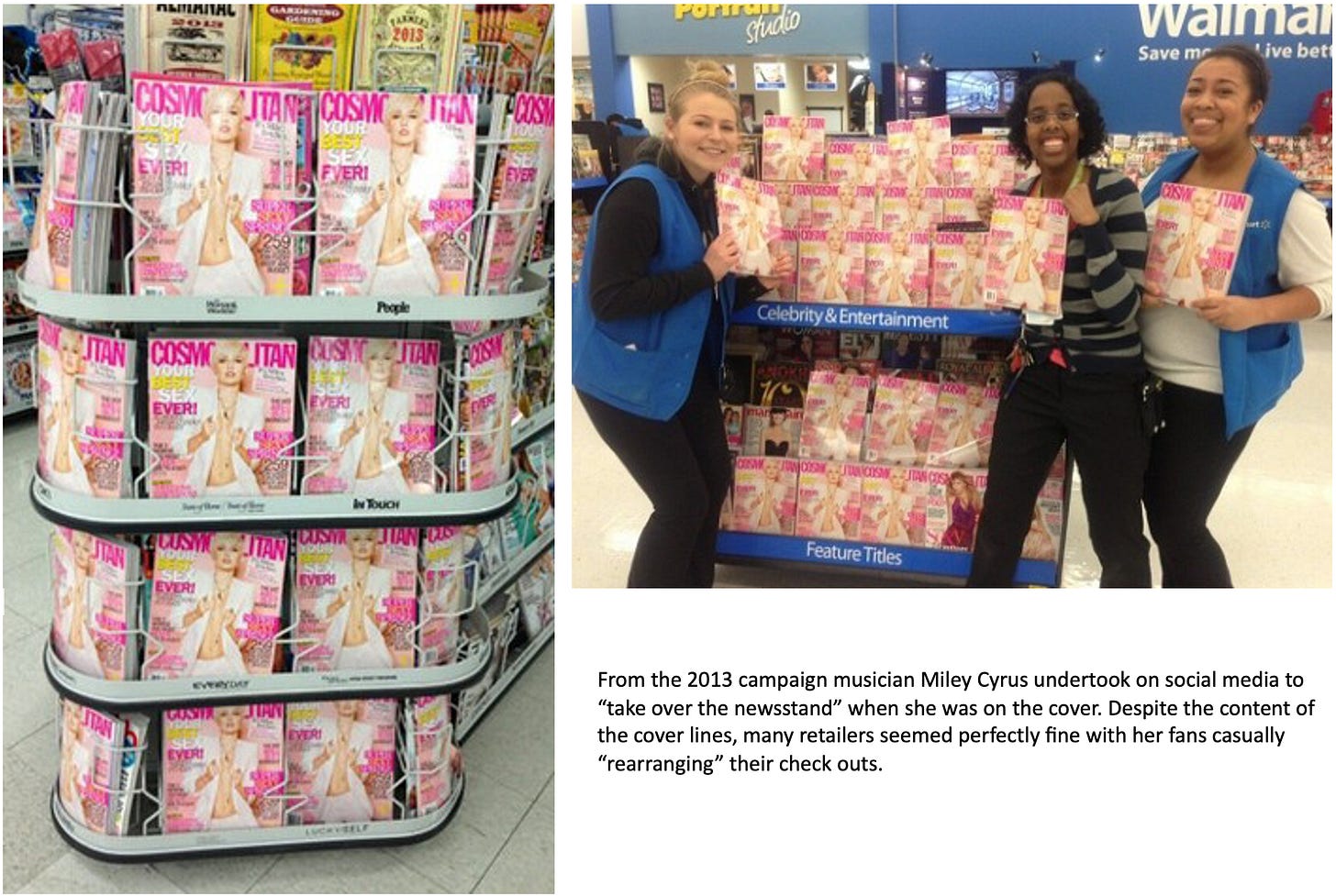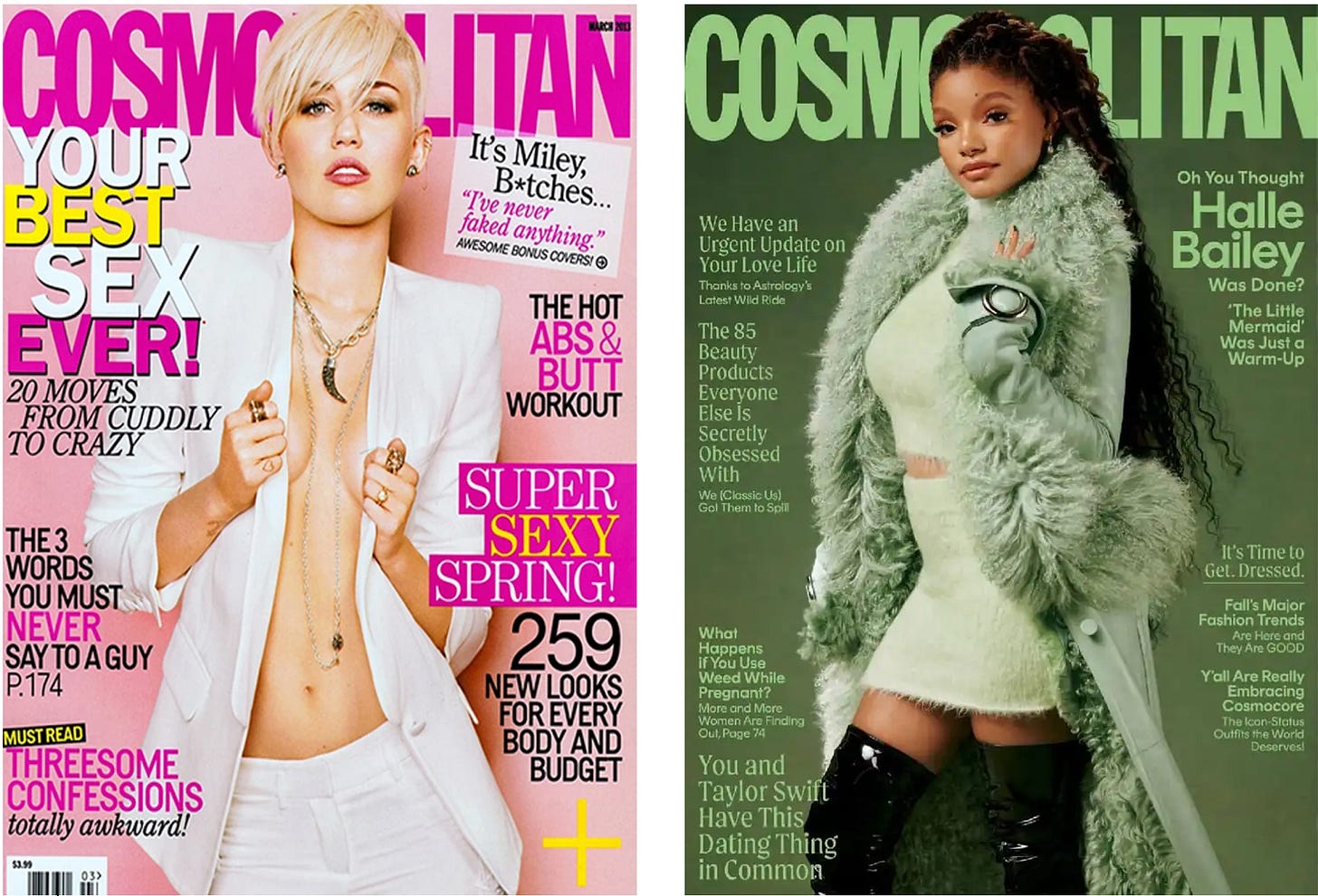Editor’s Note: For most of my adult life, my interaction with the health care system has been confined to an annual visit with the doctor. Usually, the extent of our conversation is something like this:
Doctor: “Anything new to tell me about?”
Me: “Nope, I’m good.”
Doctor: “Well then, pee in this cup, go get your blood drawn, and we’ll see you next year.”
But last week, a combo of first time vaccinations and the very first prescription I’ve had to fill in years left me feeling about twenty years older than than I actually am. I could barely make it through a day.
Question: Are all chain pharmacies that short staffed, stressed out and chaotic?
So, this week’s newsletter is actually last week’s newsletter.

I have thoughts and feelings about book and magazine bans…
Last week was “Banned Books Week” and if you’re a follower of the news, banned books are a hot topic in this country. Organizations like “Moms For Liberty” and politicians of a certain persuasion have decided that books of all stripes deserve to be a part of this decade’s “Culture Wars.”
For many years there’s been a struggle back and forth between what should be available to the general public and the public’s children when it comes reading material. But the past few years have seen a mighty upsurge in the number of books that get challenged.
While it’s rarely noticed and doesn’t happen all that often, magazines get “banned” too. I was reminded of this recently when I received a notice from a magazine distributor. A major retail chain announced that any publications containing occult or occult related content could not be displayed in their check out locations or on the front lip of the mainline rack. Moreover, the retailer stated that moving forward, publishers were required to submit any covers that fell into that “Occult” category to the distributor for review prior to distribution.
This isn’t an actual “banning” of a magazine, but depending on the content, the cover image and the cover lines, you can certainly get there. Why is the retailer taking this step? If I had to guess, a customer complained to management that a magazine with occult content offended them and they didn’t think that the publications presence in the store fit with the company’s “family friendly” description. Retailers are averse to upsetting customers, especially very vocal customers who could bring TV cameras to their doorstep for the 6:00PM news. If your number one goal is to sell stuff to the public at a very thin margin, you avoid that sort of PR at all costs. No matter your opinion about this issue, you can’t blame them for that aversion.
Do I have an opinion about that hypothetical customer? Clearly, they have never attended a product review meeting or they’d feel differently about the whole “family friendly” thing.
Over the years, magazines have faced all sorts of challenges on the newsstand. For many years, a member of the Hearst family actually campaigned against the display of a magazine that was a key part of her family’s company. As a result, in the last decade, Cosmopolitan Magazine was displayed on the checkout behind a blinder that hid its cover lines behind a blinder lest small children be corrupted by their sexy nature.
Consider this: A decade ago Cosmopolitan sold 1.028 million copies per issue on average at the newsstands. In the most recent circulation report, its newsstand sales were less than 30,000 copies. Singer Miley Cyrus was on the cover of their March 2013 issue and she suavely recommended to her millions of social media followers that they should “take over the newsstand” and rearrange things so her covers would be all over the checkouts.
In 2023, Cosmo covers are a bit tamer.
Now, let’s be fair: Much of the newsstand decline over the past decade is a reflection of the weakness of the single copy newsstand business. And, the Hearst Corporation may be doing what many of my clients now do with their print magazines: Consider the print title as a “brand extension” of their corporate identity. Investment in print circulation is often a “station keeping” exercise.
But clearly the campaign against the title didn’t help. In my opinion, it may have helped to push the company in that direction.
Over the years as I’ve worked in or adjacent to the newsstand sales world, I’ve seen other retailers push back on what they can carry. Sometimes it’s something as simple as an “authorized list” that exists to limit the amount of product that gets into the store and sorts out what category manager thinks will sell best. Other times I’ve seen requests not to put in magazines about guns, or hunting titles that have “trophy shots”, “alternative art or fashion” magazines. According to a very old file I recently found on a backup drive, an early client of mine who published science fiction and horror magazines was locked out of numerous mainstream accounts because of their content.
I’ve long felt that the right to read something, a book, magazine or comic is an essential part of the first amendment of our constitution. But in the retail world, magazines, books and their cousins are treated like any other commodity. If you make us money, we’ll display you. If anyone challenges that commodity, we may back off if the loss is marginal. Last year some local politicians in Virginia went after two books that were in Virginia Beach schools and a nearby Barnes and Noble. Fortunately, a judge threw out their lawsuit.
To my mind, libraries, bookstores, newsstands and stores that sell books and magazines as part of their wares are places where the first amendment should reign supreme. In today’s culture war environment, however, the ingredient we seem to be missing is both empathy and the realization that not everything is a zero sum equation. Just because you’re offended by that book, shouldn’t mean that I can’t read it. And sure, you may not “want it in your face.” I get that. But step back for a moment and ask yourself, is it really “in your face?” Really?
On a personal level, I’m more than willing to listen to someone’s objections to a book, magazine or comic. I’ll hear them out. I may not agree with them and that’s fine.
But if we want a healthy pluralistic society that reflects the geographic and cultural diversity that is this country, we need to be grown ups. I’d like to live in a world that will accept that not everyone will think and believe in the same way. That looking different, thinking different, being different is fine. It’s interesting. It’s welcoming. Reading is a right.
This week in “Things placed in front of the magazine rack…”

I hope you enjoyed this newsletter. Please “Like” and subscribe. You’ll get a brand new release in your email in-box every Tuesday (Or sometimes Wednesday if things get a little hectic around here).
Want to find me on the social sites?
My Instagram link is here.
I’m now hanging out at Post.News and you can find me here on this new app.
Want to see me in a suit and tie and with neatly trimmed and combed hair? Here’s my LinkedIn profile where I try to look all professional.
That’s all I’ve got for you this week. I was feeling pressed for time so I asked bard.google to write the sign-off. Here it is. This is our future, folks:
“I hope that you are having a productive week with concise and efficient meetings, a manageable email inbox, and well aligned and collaborative teams. And, may your office environment remain free from unpleasant odors.”







